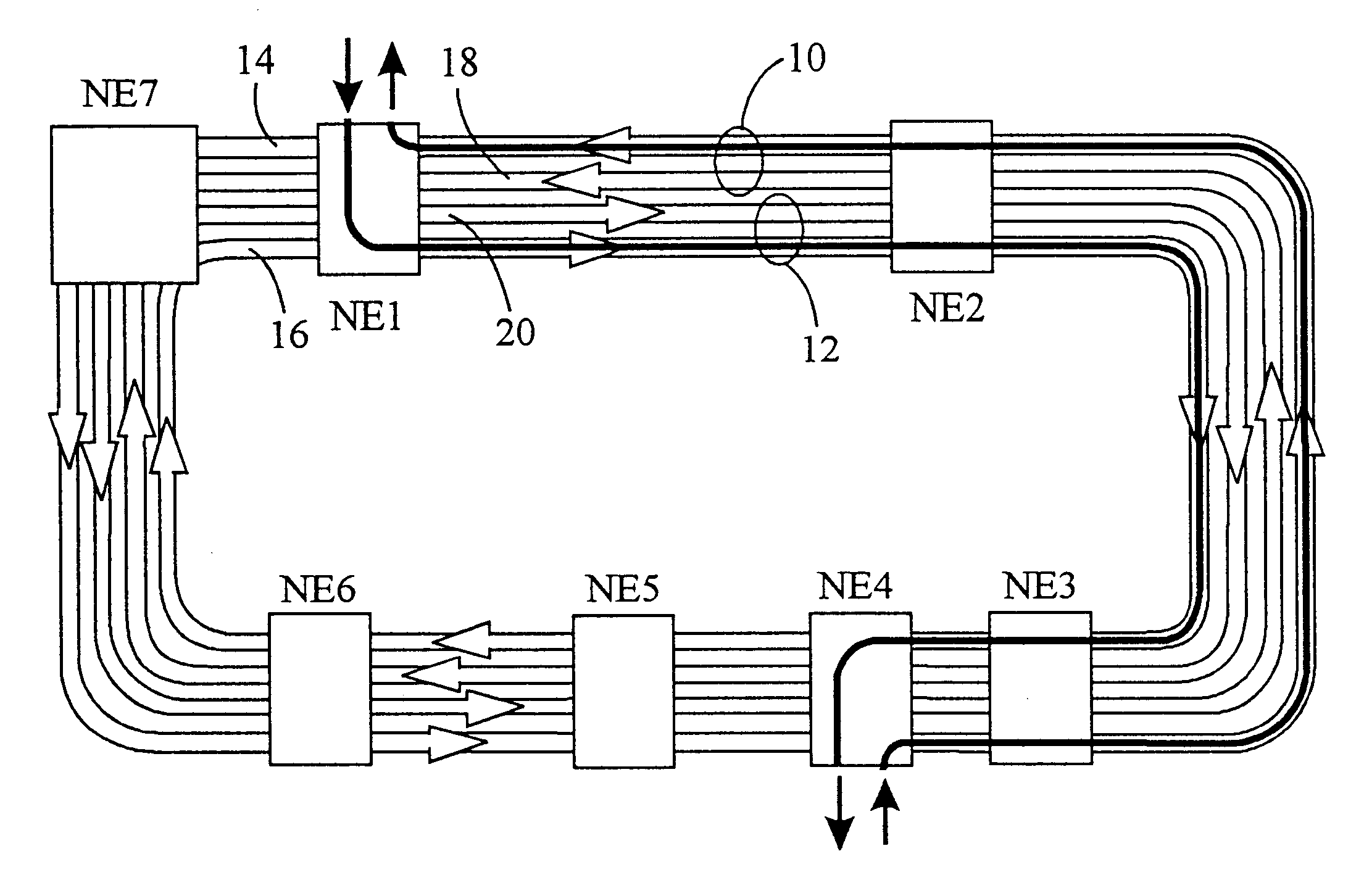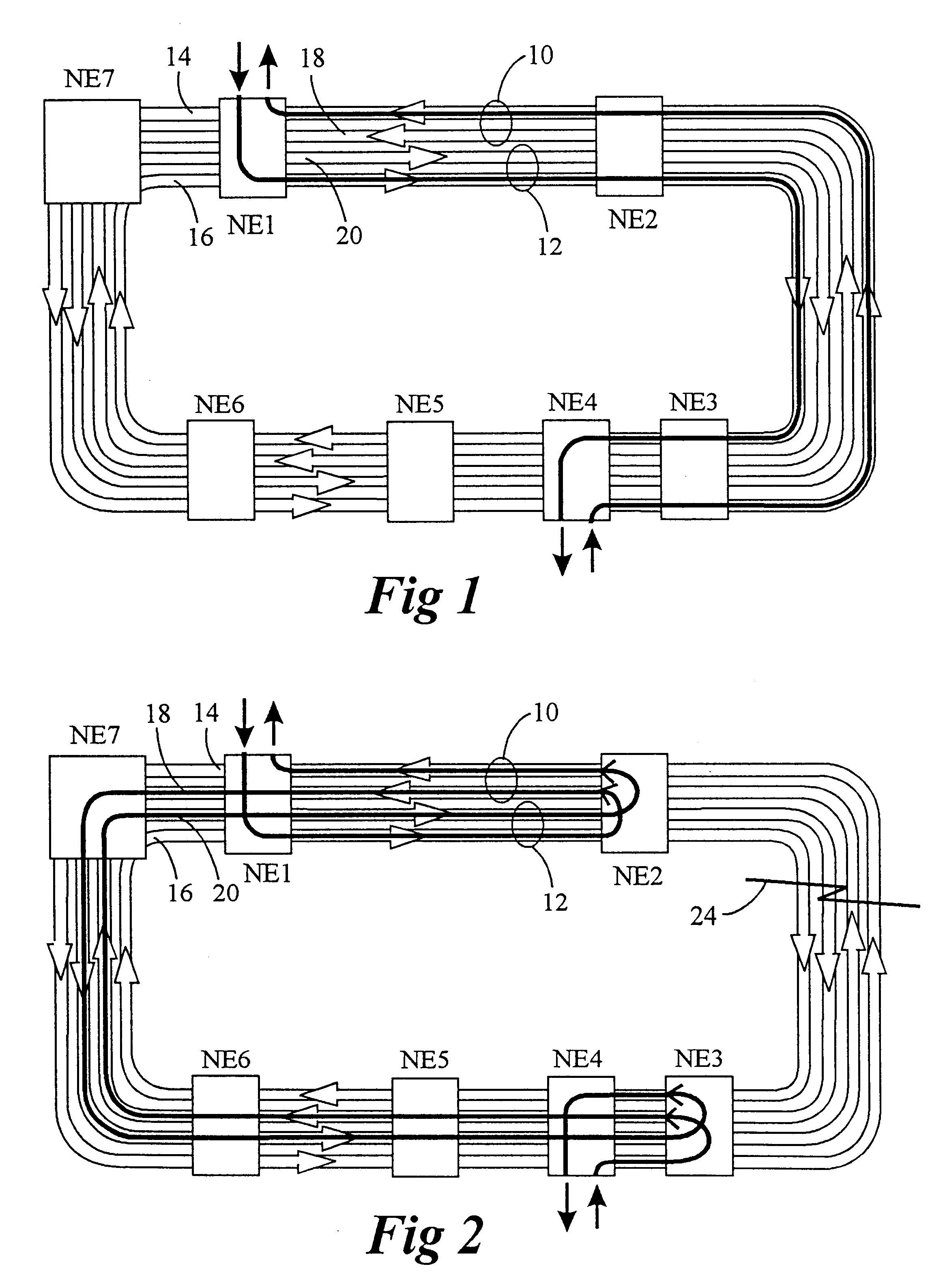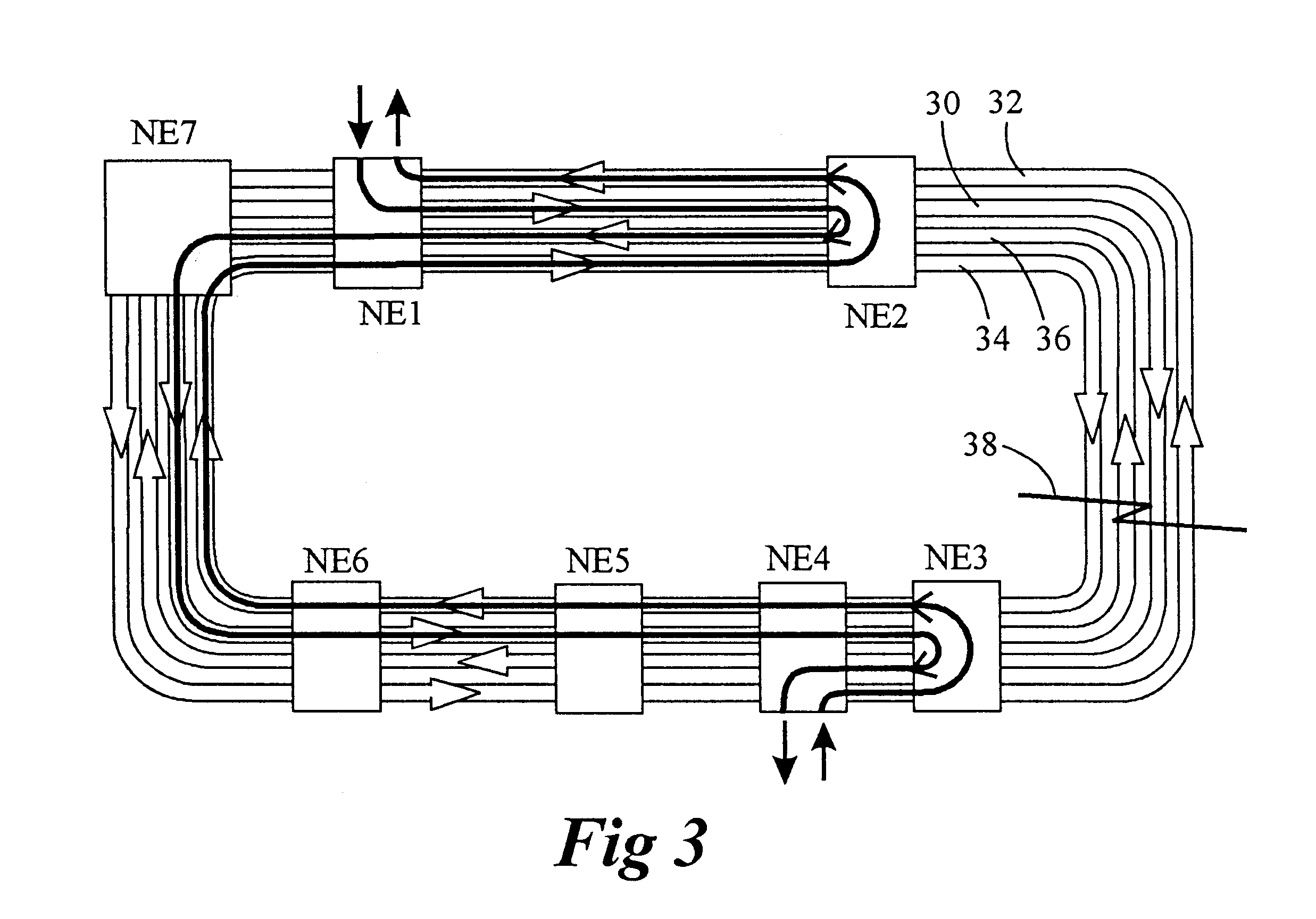Optical inter-ring protection having matched nodes
a technology of optical interring protection and nodes, applied in the direction of time-division multiplexing selection, instruments, transmission monitoring, etc., can solve the problems of reducing the overall capacity and capabilities of the ring, and the task of interfacing them is complicated
- Summary
- Abstract
- Description
- Claims
- Application Information
AI Technical Summary
Problems solved by technology
Method used
Image
Examples
Embodiment Construction
As described above, matched nodes use the working (in DCW mode) or protection (in the DCP mode) bandwidth of rings for the secondary path. The secondary path is only used under certain failure scenarios of the primary inter-ring connection. The bandwidth that is allocated for secondary paths cannot be used for anything else. Also, either protection or working bandwidth which has been set aside for the secondary path is set to a "pass through" mode at any nodes which may be located between the primary and secondary nodes. At any of these middle nodes, no add / drop of traffic is permitted on that bandwidth set aside for the secondary path, thus limiting their capability as well as that of any other nodes on the rings which may want to communicate with these middle nodes. This bandwidth therefore does not generate any revenue and reduces over all capacity and capabilities of the ring. The use of secondary path bandwidth is of great concern for network operators who employ particularly l...
PUM
 Login to View More
Login to View More Abstract
Description
Claims
Application Information
 Login to View More
Login to View More - R&D
- Intellectual Property
- Life Sciences
- Materials
- Tech Scout
- Unparalleled Data Quality
- Higher Quality Content
- 60% Fewer Hallucinations
Browse by: Latest US Patents, China's latest patents, Technical Efficacy Thesaurus, Application Domain, Technology Topic, Popular Technical Reports.
© 2025 PatSnap. All rights reserved.Legal|Privacy policy|Modern Slavery Act Transparency Statement|Sitemap|About US| Contact US: help@patsnap.com



